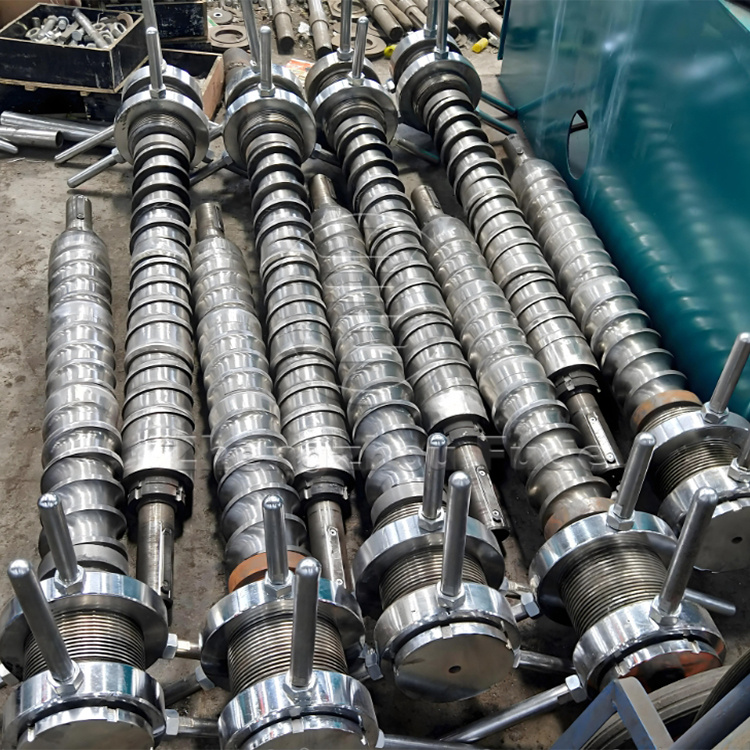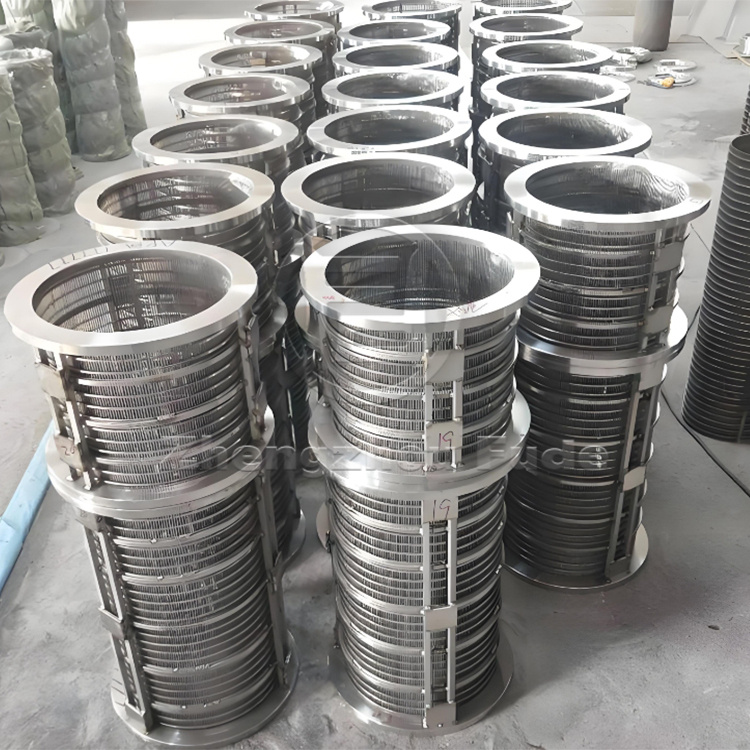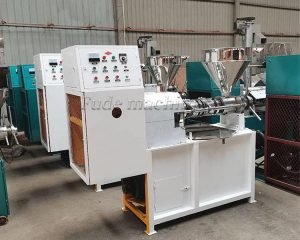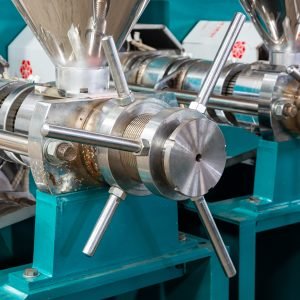How a beginner should operate an oil press?
Operating a screw press involves more than just flipping a switch. Many small details impact your results significantly. Let’s explore the critical operational secrets shared by seasoned professionals, beginning with the often-misunderstood step of proper preheating.
When you get a new screw oil press, or after replacing major components like the screw and cage bars , there’s a necessary break-in period. Many users misunderstand its true purpose. It’s not just about smoothing out microscopic imperfections on the metal surfaces.
Operator and Material Familiarization
The break-in period is equally critical for you, the operator. Every machine, even identical models, can have slight variations. More importantly, every batch of oilseed behaves slightly differently. This period is your opportunity to:
- Learn the Machine’s “Personality”: How does it sound under different loads? How quickly does it respond to temperature changes? What are its normal vibration levels?
- Dial in Parameters: Use this time to experiment carefully with temperature settings, feed rates, and pressure adjustments for the specific oilseed(s) you plan to process regularly.
- Observe and Record: Pay close attention to the oil yield, cake condition, oil clarity, motor load, and temperatures. Keep a log. This data is invaluable for establishing baseline performance and optimizing settings later.

How Does Material Moisture Secretly Impact Screw Press Efficiency and Safety?
Material moisture content is critical. Too high causes slippage and low yield; too low increases wear and energy use. Each oilseed has a narrow optimal moisture range for efficient and safe pressing.
Optimal Moisture Ranges are Narrow
It’s important to understand that the ideal moisture content for pressing varies between different types of oilseeds. It’s usually within a fairly narrow range.
Why Should Initial Oil Filtration Be Seen as Part of the Pressing Process?
Treat initial filtration as an extension of the pressing process, not an afterthought. Filtering the hot, freshly pressed oil immediately is more efficient and helps preserve oil quality by removing impurities quickly.
In many small to medium-sized oil processing operations, crude oil is collected from the press and stored, with filtration planned for a later time. While this works, it’s often not the most efficient or effective approach, especially for maximizing quality.
Integrating the Workflow
Thinking of initial filtration as part of the continuous pressing operation encourages a better workflow. Position your primary filter (e.g., a plate filter press, centrifugal filter, or even a simple settling tank system for very small scale) close to the oil press outlet. Arrange for the hot crude oil to flow directly into the filter system. This minimizes handling, reduces cooling time before filtration, and streamlines the entire process from raw seed to cleaner crude oil. It turns two separate batch processes into a more connected, semi-continuous flow. As manufacturers like us, Zhengzhou Fude Machinery, design complete lines, we always consider this integration for optimal performance.
Are Non-Genuine Spare Parts Really Cheaper for Your Screw Press?
Are you tempted to buy cheaper, non-original spare parts for your screw press to save money upfront? While the initial cost is lower, this decision often leads to higher expenses and problems down the line.
Using non-genuine core parts like screws and bars is often false economy. Poor fit, inferior materials, or incorrect hardness can drastically reduce performance, shorten lifespan, and even damage your press.


When core components of your screw oil press, such as the main screw or the cage bars , wear out, replacing them is necessary. It can be tempting to source cheaper alternatives from third-party suppliers instead of using original equipment manufacturer (OEM) parts. However, based on our experience as equipment manufacturers, this is rarely a wise long-term strategy.
If your press makes any sudden, loud, abnormal noise or jams, the absolute first step is to hit the emergency stop button immediately. Do not try to force it or reverse it.
Screw oil presses operate under high pressure and torque. When something goes wrong internally, the forces involved can cause significant damage very quickly. Unusual noises or sudden jamming are serious warning signs that require immediate action.
The Correct Emergency Procedure
The only correct first response is:
- Hit the Emergency Stop: Immediately press the big red emergency stop button. This cuts power to the drive motor instantly.
- Power Off Completely: After hitting the emergency stop, turn off the main power supply to the machine for safety before any inspection begins (lock-out/tag-out procedures are recommended).
- Investigate the Cause: Carefully try to determine what caused the problem. Was it a foreign object (metal, stone) in the feed material? Is there a severe blockage of packed material? Has a component failed (e.g., a broken bar)?
- Clear or Repair: Once the cause is identified, safely clear the obstruction or perform the necessary repairs. This may require partial disassembly of the press cage.
- Verify: Before restarting, double-check that the issue is resolved and everything is reassembled correctly.
- Restart Carefully: Follow normal start-up procedures, listening and observing closely.
Safety and preventing further damage are the top priorities. The emergency stop button is there for a reason – use it without hesitation when serious problems arise.


Why is Cleaning Hidden Areas of Your Screw Press Crucial for Long-Term Operation?
Do you regularly wipe down the outside of your screw press but neglect the harder-to-reach spots? Accumulated grime in hidden areas isn’t just unsightly; it can impact performance, hygiene, and machine longevity.
Thorough cleaning must include hidden areas. Oil residue and fines build up in crevices, under guards, and around the base, affecting hygiene, heat dissipation, and potentially causing corrosion or odors.
Daily cleaning routines often focus on the visible surfaces and the main processing path of the screw oil press. While this is important, it’s easy to overlook the gradual buildup of oil, dust, and fine particles in less accessible areas. This hidden grime can cause problems over time.
Maintaining a truly clean machine, inside and out, contributes to safer operation, better hygiene, longer equipment life, and consistent product quality.
Conclusion
Mastering these often-overlooked details transforms basic screw press operation into an expert process. Apply these insights consistently for improved yield, superior oil quality, and longer, more reliable machine performance.
Related recommendations
-
What is the application scope of hydraulic oil press
109Hydraulic oil press is a device specifically designed for extracting various vegetable oils
View details -
What is the production efficiency of hydraulic oil press and spiral oil press
160Hydraulic oil presses and screw oil presses each have their own characteristics in terms of production efficiency.
View details -
How Tea Seed Oil Processing Promotes Profitability
49What Makes Tea Seeds Unique for Oil Extraction?Key Quality Factors for Tea SeedsWhat Are the Essential Steps for Tea Seed Oil Extraction?Tea Seed Oil Extraction WorkflowCold Pressing or Hot Pressing: Which is Better for Tea Seed Oil?Cold vs. Hot P...
View details -
What plant seeds is the fully automatic oil press suitable for
217The fully automatic oil press is suitable for pressing various plant seeds with high oil content, and can efficiently extract high-quality plant oil
View details
 Oil Press Equipment and Oil Refining Machinery for Sale – Start Your Oil Press Business
Oil Press Equipment and Oil Refining Machinery for Sale – Start Your Oil Press Business




HelloPlease log in